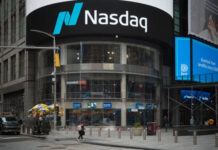Markets
Yesterday’s risk-off and Fed Minutes (taper talk) only provided a one-off waiver for the US dollar as things turned back to recent “normal” today. EUR/USD changes hands around 1.2210 from an 1.2175 open. The trade-weighted dollar drifts back south of the 90 big figure. Even USD/JPY is on the drift. At 108.80 it is desperately trying to hold this year’s upward trend line, but efforts seem to be in vain. US eco data weren’t really helpful either with the May Philly Fed business outlook following the trend of sub-par eco outcomes. The regional business survey fell more than expected, from 50.23 to 31.5 (vs 41.5 consensus). Details showed moderations in new orders, shipments and employment while price indicators (both paid and received) leapt higher. This combination is the US economy’s Achilles heel of late. Rising unfilled orders and delivery times continue to point to supply chain struggles. Weekly jobless claims fell broadly in line with expectations to 444k. Main markets ignored the US data releases. Stock markets record small gains after yesterday’s beating with also commodities in better shape. German Bunds underperform US Treasuries. German yields add up to 1.4 bps with the belly of the curve underperforming. The German 10y yield is currently trading near -0.10%. 10-yr yield spread changes vs Germany narrow by 2-3 bps with Italy and Greece (-5 bps) outperforming. The US yield curve bull flattened with yields falling 0.5 bps (2-yr) to 2.6 bps (30-yr).
EUR/GBP treads water today near 0.8630. Since the one-off repositioning after the Scottish election outcome (removing short term political risk), the UK currency failed to build momentum towards the EUR/GBP 0.8472 top. On the contrary, the underperformance of European bond markets caused the euro to slowly, but gradually, retake control. UK labour market and inflation data failed to impact the currency pair. Retail sales and PMI’s offer a final chance tomorrow. Otherwise, EUR/GBP seems to be heading back to the cursed 0.87 resistance zone. Dollar weakness remains the main driver in cable.
News Headlines
The order balance in a monthly survey of the Confederation of British Industry jumped the from -8 in April to +17 in May, the highest level since 2017. The measure of overall output growth over the past three months rose to 18 from 3, the strongest level since 2018. Exports orders still materially lagged this broader trend rising from -18 to 17 only. At the same time, expectations for average selling prices accelerated further to 38 from 27 with this index nearing the peak level of early 2018 as firms anticipate the supply chain bottlenecks might continue to put upward pressure on prices.
The South African Central bank left its policy rate unchanged at 3.5% as expected. The central bank upgraded its 2021 economic forecast from 3.8% to 4.2% with growth expected at 2.3% in 2022 and 2.4 in 2023. Forecasts for headline inflation in 2021 and 2022 were little changed at 4.2% and 4.4% respectively. The SABR model sees the key rate at 4.07% by end 2021 and at 5.02% at the end of 2022. The rand strengthens slightly after the SARB decision with USD/ZAR trading at 14.00.
Oil prices are volatile, but lower today. Brent crude set an intraday low around $65/b shortly after Iranian President Rouhani said that the main agreement has been made between negotiators in Vienna on restoring the 2015 nuclear deal. Diplomats are still discussing details and finer points according to Rouhani. Nevertheless, one of the main implications of restoring the deal would be a removal of sanctions against the country, allowing it amongst others to significantly increase oil exports.













